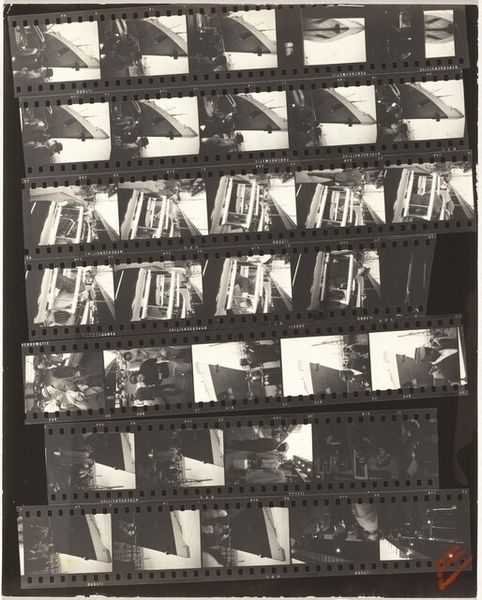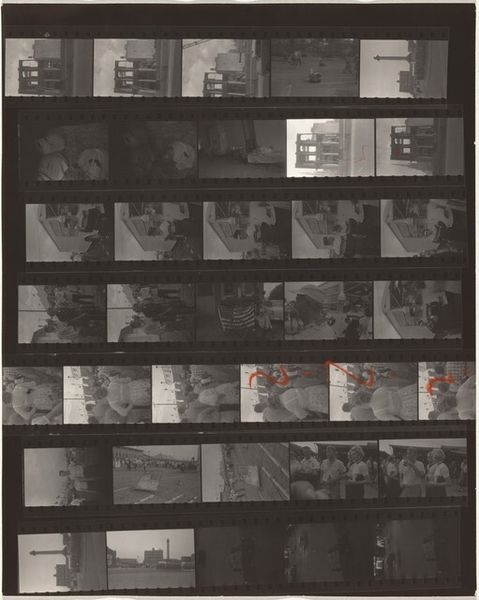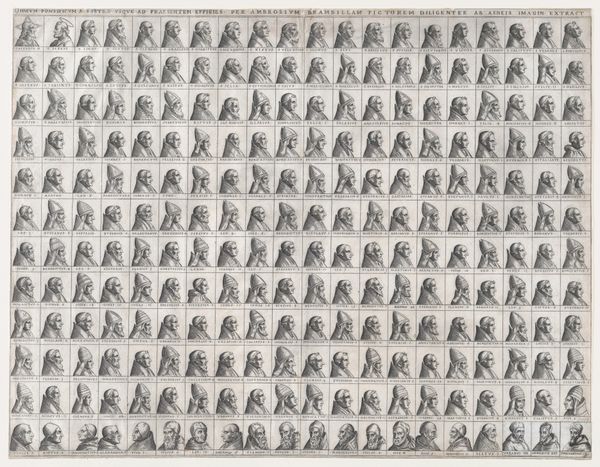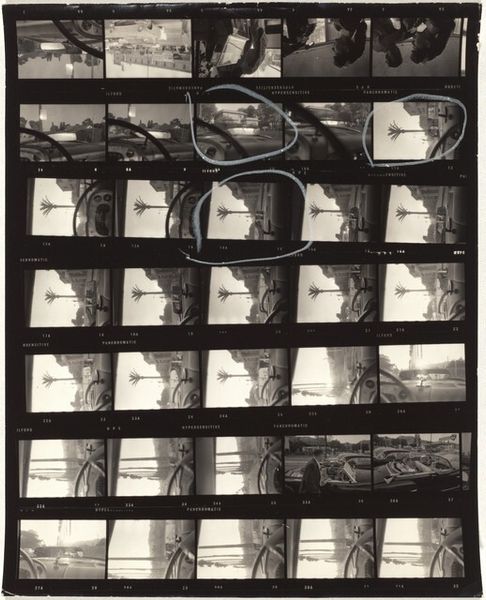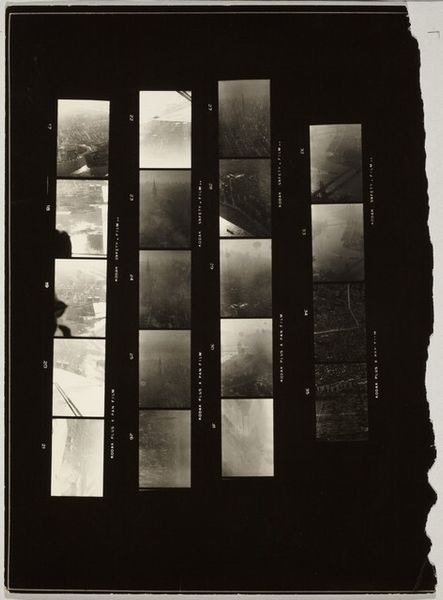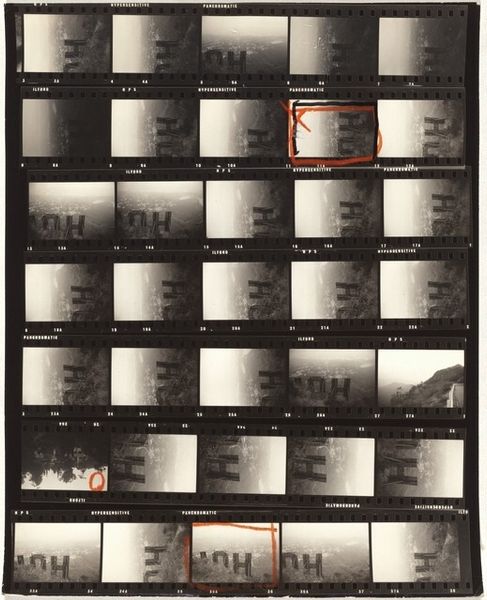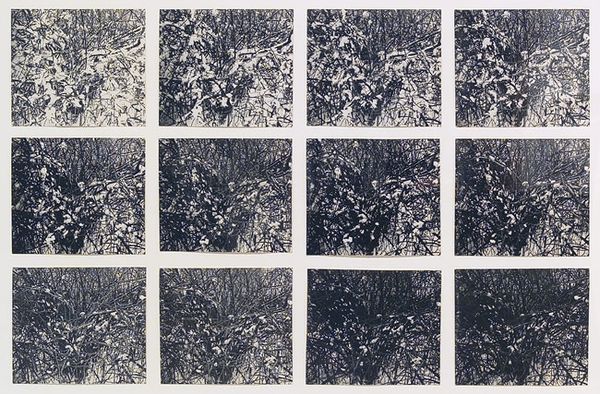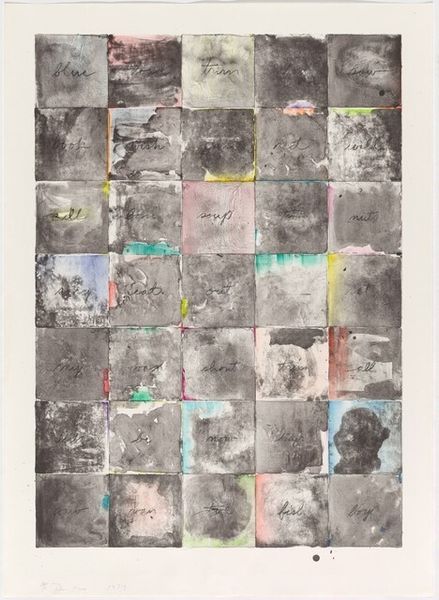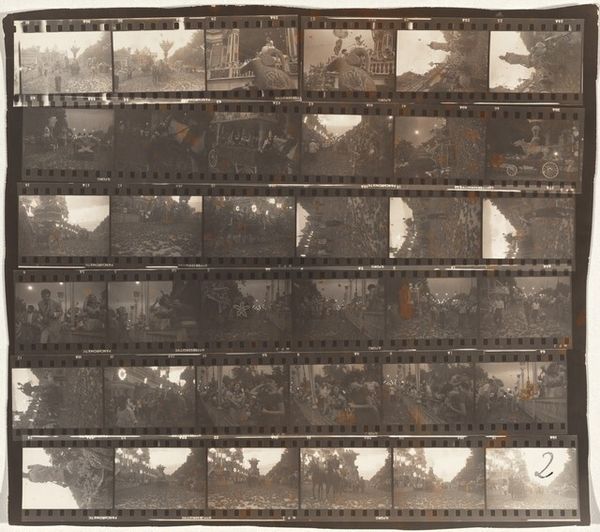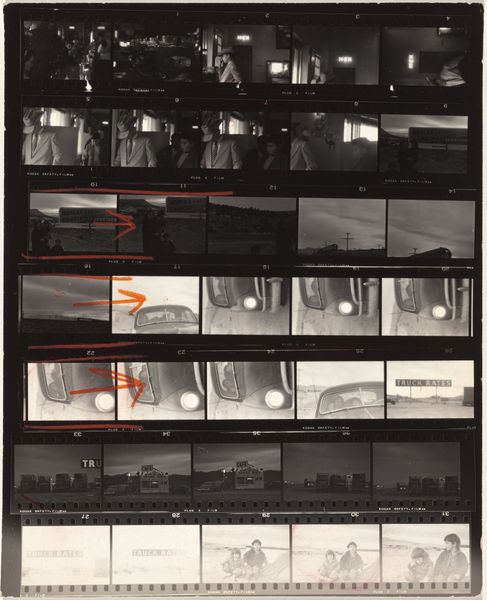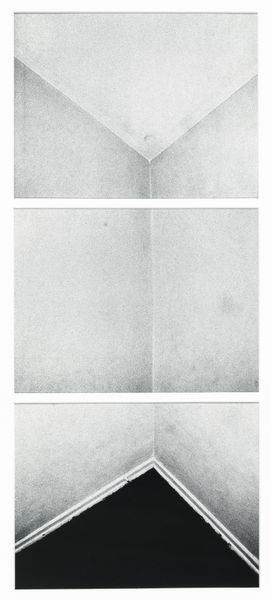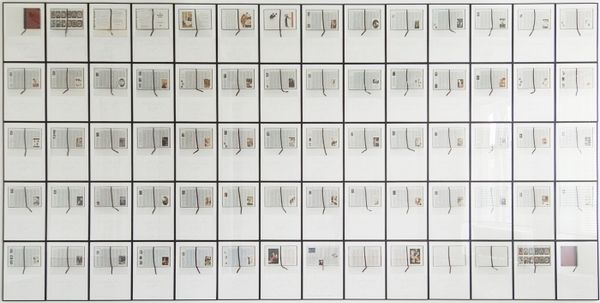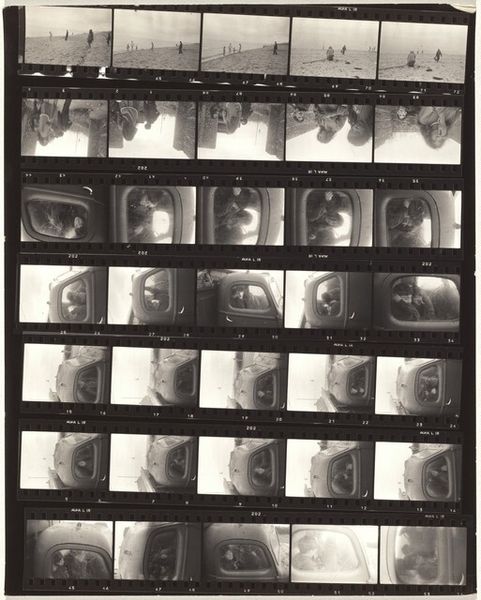
photography, serial-art
#
self-portrait
#
conceptual-art
#
photography
#
serial-art
#
process-art
Copyright: John Hilliard,Fair Use
Curator: What we're looking at is John Hilliard's "Camera Recording its Own Condition (7 Apertures, 10 Speeds, 2 Mirrors)" from 1971, a piece comprised of a grid of photographs documenting a camera photographing itself. It's a layered exploration of the photographic process itself. Editor: My first thought is, it's like a visual representation of data decay! Seeing the image quality degrade systematically across the grid is quite powerful. You start with this bright, almost ethereal representation and end in near total darkness. Curator: Precisely! It's so cool how he reveals the mechanics of image creation by foregrounding its limitations. Photography claims objectivity, right? But Hilliard turns that notion on its head. The gradual darkening, due to aperture and speed adjustments, visually debunks photography's promise of pure, unadulterated reality. Editor: Right, and let's think about the political dimensions too. This work appeared during a period of immense socio-political upheaval, so its self-reflexive and systematic approach can be interpreted as a form of institutional critique. The camera isn't just reflecting itself but perhaps also reflecting on the very conditions under which images are made and consumed. What are the implications of how we visually document, create truth? Curator: Good point. And Hilliard anticipated our obsession with metadata, exposing what shapes the final product. The hand in the photos subtly challenges the myth of the camera as a neutral, invisible tool. It's funny how his hand, which is responsible for each change, increasingly gets devoured by shadows as the piece progresses. Editor: It raises questions about how technology mediates our understanding of self and world. The progression isn’t just technical; it becomes metaphorical. Light becomes a symbol of understanding, while darkness signals obscuration. The act of visual recording itself, when manipulated, reveals how easily perception can be distorted, or censored. Curator: In the end, Hilliard has me questioning everything! What do you make of the mirrors? Do they symbolize some aspect of voyeurism, perhaps? I keep seeing them less like objects that serve a purpose in creating this image and more like an admission to an inherent aspect of photography. Editor: Agreed, or maybe the mirror reveals that objectivity in photography is always a kind of fiction; we are always implicated in constructing the image, whether as photographers or viewers. Thinking about it now, it reveals just how impactful conceptual art can be by making us active participants. Curator: True, I will keep the shades ready. I see pictures a little different now. Editor: Ditto. Art has that special way to keep our lenses clean, doesn't it?
Comments
No comments
Be the first to comment and join the conversation on the ultimate creative platform.
